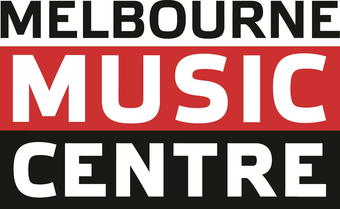Communication is the heartbeat of human connection, but for individuals on the autism spectrum, navigating this intricate dance of words and emotions can be challenging. Fortunately, music offers a bridge—a powerful tool that can unlock expression, connection, and growth. In this post, we'll explore how learning a musical instrument can be a transformative experience for individuals with autism, enhancing their communication skills and fostering emotional connection.
The Language of Music
Music is a universal language that transcends words. It speaks to our emotions, bypassing the complexities of verbal communication. For individuals with autism, who may struggle with conventional language, music provides an alternative means of expression. Here's how it can make a profound impact:
1. Non-Verbal Expression: Learning to play a musical instrument allows individuals to communicate without words. Through melodies, rhythms, and dynamics, they can convey a wide range of emotions, from joy to sadness, frustration to contentment.
2. Emotional Regulation: Music has the power to soothe and calm. Playing an instrument can help individuals with autism regulate their emotions, providing a sense of comfort and security.
3. Sensory Integration: Many individuals with autism have heightened sensory sensitivities. Engaging with a musical instrument can be a sensory-friendly activity that encourages exploration and comfort with tactile experiences.
4. Enhancing Fine Motor Skills: Playing an instrument involves precise motor movements. The practice of finger placement, coordination, and timing can help develop fine motor skills, which can be beneficial for everyday activities.
5. Social Connection: Group music lessons or ensemble playing can foster social skills and a sense of belonging. Collaborative music-making encourages communication, cooperation, and shared experiences.
6. Boosting Confidence: Mastering an instrument boosts self-esteem and confidence. Success in music can translate to increased self-assurance in other areas of life.
Case Studies and Personal Stories
Numerous case studies and personal stories highlight the transformative power of music for individuals with autism:
-
Autism Spectrum Music Program (ASMP): This program in California offers music education to individuals with autism. Participants have reported improved communication skills, increased self-esteem, and greater social engagement.
-
Temple Grandin: The renowned autistic author and advocate, Temple Grandin, credits her early exposure to music lessons as a pivotal factor in her personal development. Music helped her express emotions and build confidence.
-
Eddie Adcock: A well-known bluegrass musician, Eddie Adcock, who has autism, discovered his musical talent at a young age. He used music as a form of communication and self-expression, becoming a successful musician.
Starting the Musical Journey
If you're considering music as a way to enhance communication skills for someone with autism, here are some steps to get started:
1. Choose the Right Instrument: Explore different instruments to find the one that resonates with the individual's interests and sensory preferences. Options include piano, guitar, drums, or even voice.
2. Find a Music Teacher: Look for a music teacher experienced in working with individuals with autism. They can tailor lessons to meet the specific needs and goals of the learner.
3. Create a Supportive Environment: Ensure that the practice environment is comfortable and sensory-friendly. Provide positive reinforcement and encouragement.
4. Join Music Groups: Consider joining community music groups or ensembles. These settings offer social interaction and collaborative opportunities.
Finding Harmony and Connection
In the world of music, individuals with autism discover a profound means of expression and connection. Learning to play an instrument can enhance communication skills, foster emotional growth, and provide a channel for non-verbal expression. It is a journey of self-discovery, connection, and harmonious progress.

